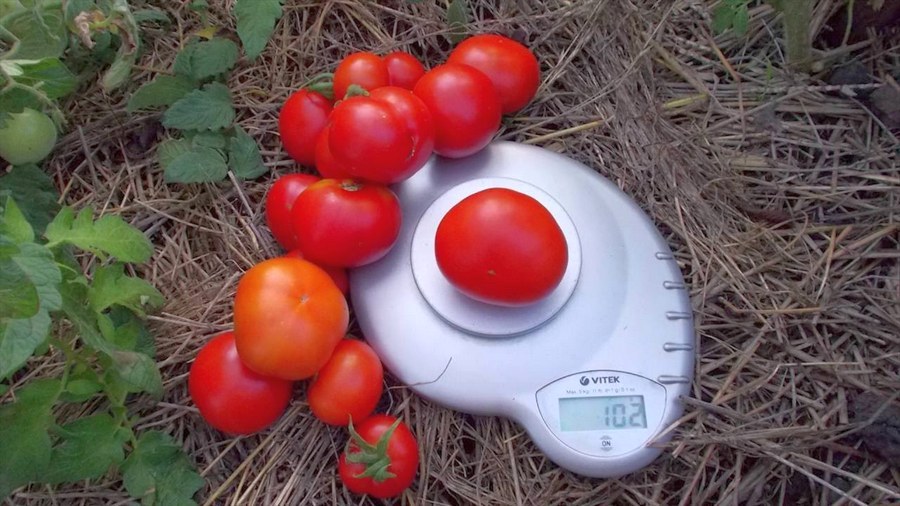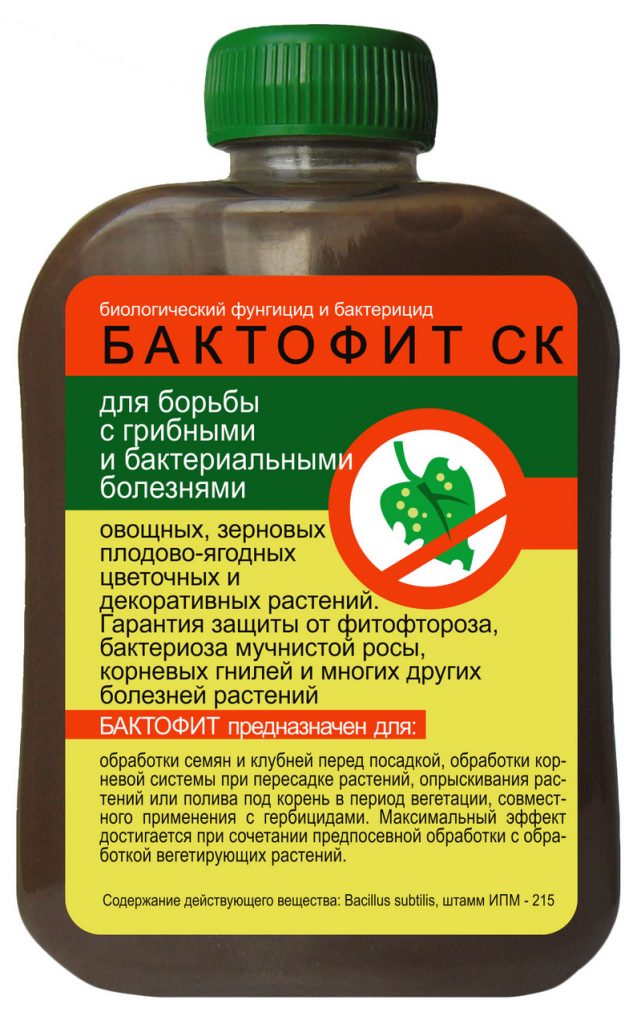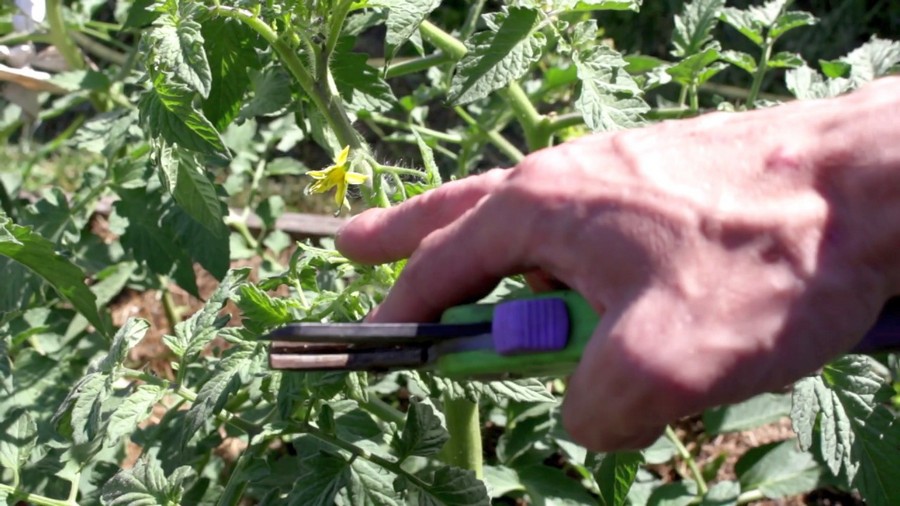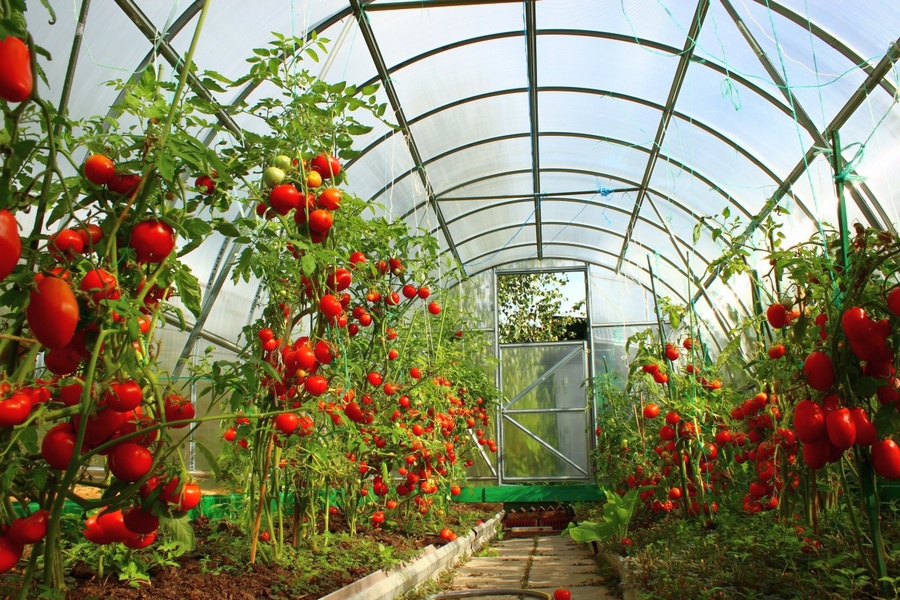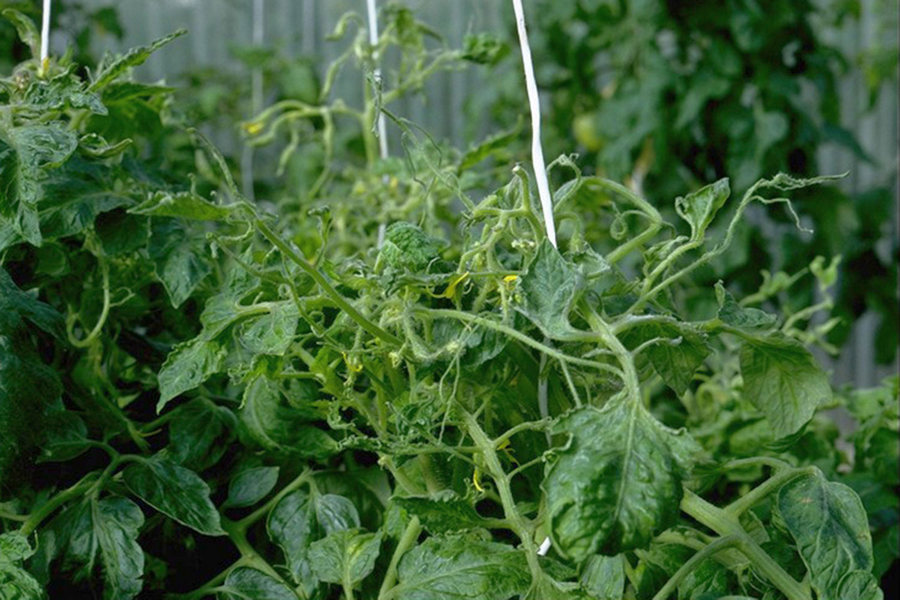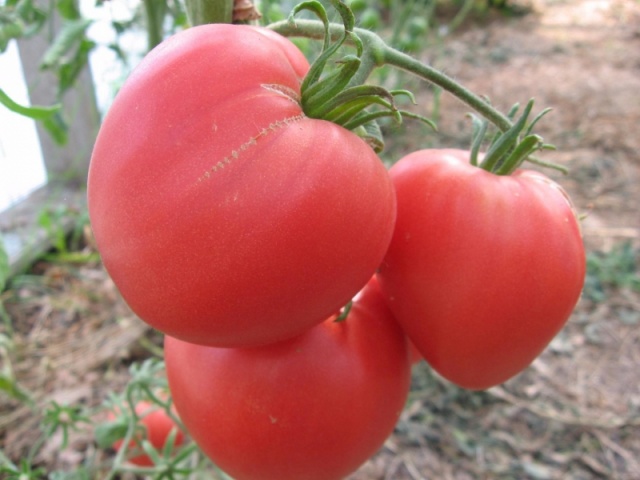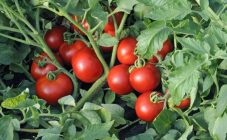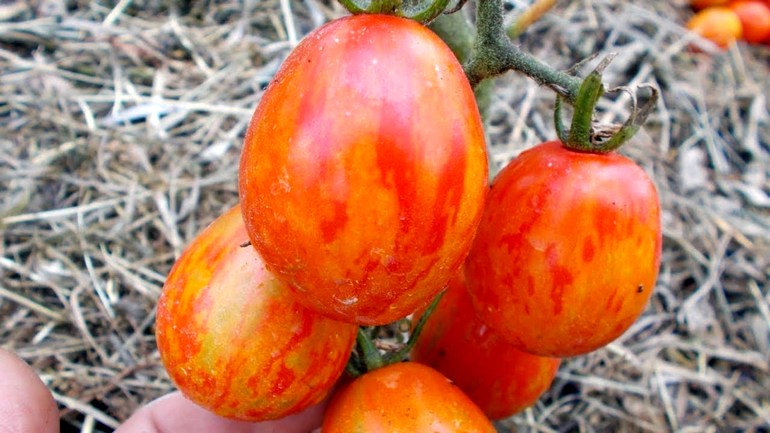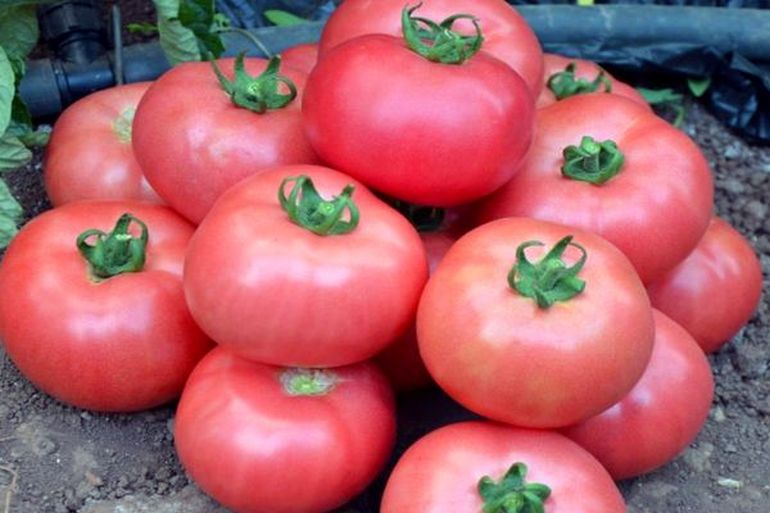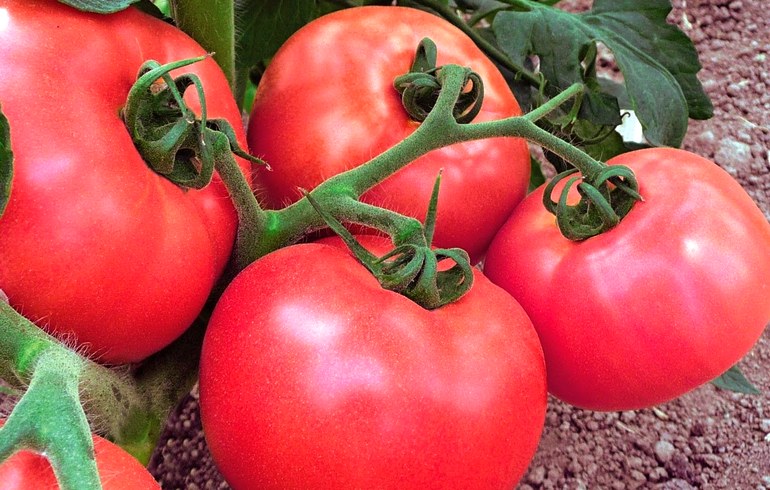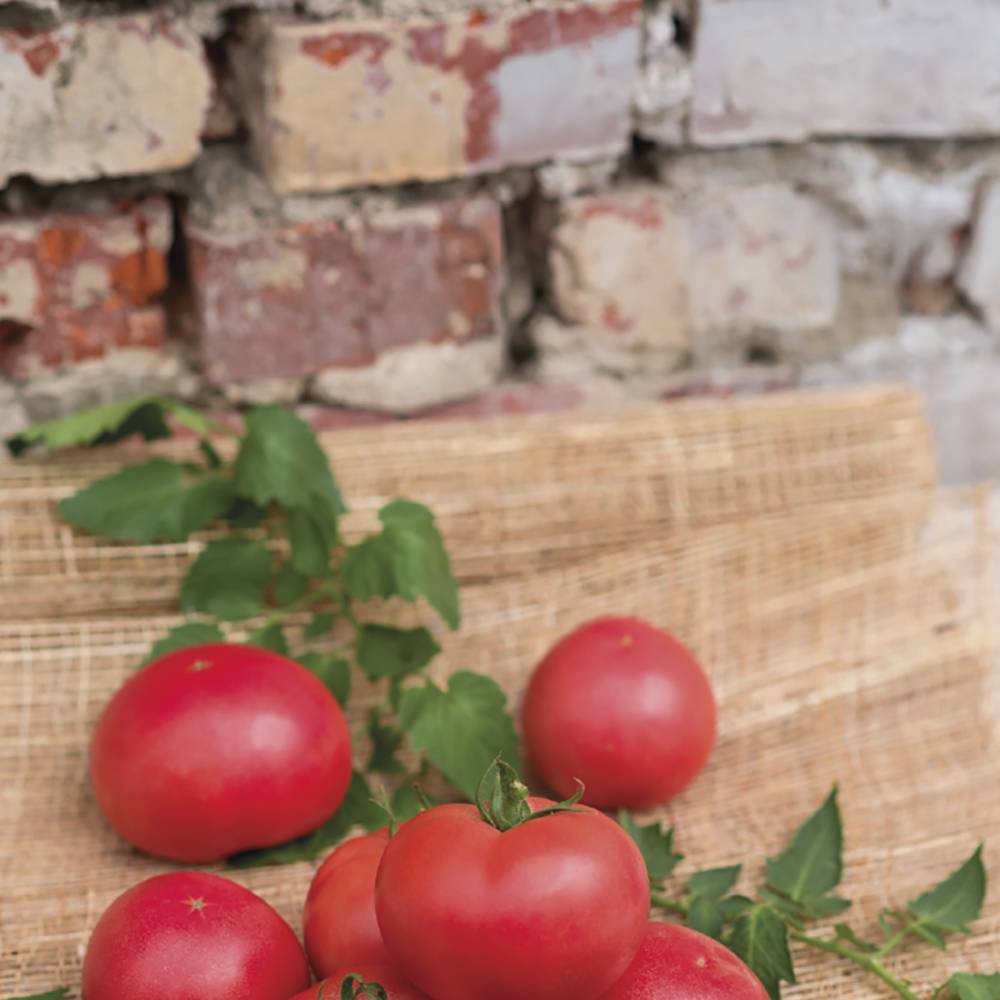Content:
The early-ripening Siberian tomato variety was bred by crossing hybrids 534/1 and 114 at the Federal Scientific Center for Vegetable Growing, known in the Soviet era as VNIISSOK, located in the Odintsovo district of the Moscow region. After approbation "in the field", the early-ripening Siberian tomato in 1959 was included in the State Register of Breeding Achievements. This is how the story of half a century of sympathy of summer residents and farmers for an unpretentious, prolific tomato variety began.
Characteristics of the variety
Siberian early ripening tomato basic characteristics and a detailed description of the variety:
- Due to its resistance to unfavorable temperature extremes, it is cultivated both indoors and outdoors;
- Ripening dates are early - between sowing seeds and harvesting the first harvest about 100-120 days;
- The main part of the fruits on the bush ripens at the same time;
- The variety is determinant, rarely exceeds 0.9 meters in height, when cultivated in closed ground, and 0.7 meters in the open;
- Rounded, with a slight ribbing, fruits reach a mass of 90-120 grams;
- Highly resistant to tobacco mosaic virus;
- More than 4-5 fruits are tied and ripen on one hand;
- The fruits are suitable for transportation, used for winter harvesting (pickles, marinades) and fresh consumption.
Growing features
In greenhouse conditions
Tomatoes can be sown directly in the greenhouse or planted with hardened home grown seedlings.
For germination, the seeds must provide a comfortable temperature of + 22-25 ° C.
When sowing under cover in regions with a temperate climate, seeds are planted in early March, in more severe climatic conditions - at the end of March or the second half of April. The average temperature of the soil and air should not fall below + 15-17 ° C.
When purchasing a ready-made universal and special soil for tomatoes, do not forget to heat it: steam it, warm it up, steam it (with boiling water or a solution of potassium permanganate). This procedure eliminates harmful disease spores and weed seeds.
The seeds are pre-soaked in a growth stimulant solution (Baktofit, Epin, Fitosporin, solutions based on honey and tree aloe). To achieve 100% germination of plantings, seed is germinated in a humid environment.
Seeds are laid out in spilled grooves and covered with soil by 1 cm. Seedlings are thinned out. Tomatoes at the stage of 2-3 true leaves are dived into individual containers or directly into the hole (when sown in a greenhouse).
The main feature of growing Siberian early variety tomatoes in greenhouse conditions is their growth. The determinant characteristic does not allow the bush to grow more than 80-95 cm indoors, so pinching the tops of the stepsons is not required for it.
To obtain the maximum yield, the bush is formed into several stems. In addition to the central trunk, 1-2 powerful stepsons are left. Tomatoes continue to spawn constantly, so the procedure for breaking out shoots is carried out weekly.
On each trunk of the plant, 3-4 fruit clusters are formed.It was noted that the first flower clusters appear after 8-9 true leaves are formed on the bush and higher every 2-3 leaves.
The shoots remaining after pinching need to be tied to the supports. The branches are not strong enough to withstand giant fruit clusters. For a low-growing tomato bush, rounded one-hundred-gram red heavy fruits (60-120 grams) are a potential threat of branch fracture.
Subject to the rules of agricultural technology, 8-10.5 kg of fruits can be harvested from each square meter of Siberian early ripening tomato plantings in greenhouses.
In the open field
In the open field, tomatoes are recommended to be grown through seedlings. Young plants are planted in rows in May-June, after the last return frosts. The distance between the bushes is 50-60 cm, the row spacing is 30-35 cm.
Pre-planting preparation:
- Formation of ridges for tomatoes. Improving soil fertility per 1 m2 of tomato bed: a bucket of rotted compost, a bucket of humus, 1/2 bucket of wood ash, 2-3 tablespoons of superphosphate;
- Hardening of seedlings. Before planting in a permanent place, the seedlings are gradually accustomed to the sun and the coolness of the street. Plants are taken out into the open air, moving from shady areas to sunny ones, daily increase the time spent outdoors;
- Before disembarking. Fertilizer for tomatoes (Zdraven, Kemira, Fertika, etc.) is added to the planting holes in a dosage according to the instructions, and they are spilled abundantly with water (2.5-3 liters).
The plant is tamped and sprinkled with fertile soil. The next watering is carried out in 7-10 days, mulching the soil in the near-stem circle.
In the open field, the Siberian early maturing bush is formed into 1-2 stems, leaving no more than one dominant stepson on it. Growth characteristics differ from greenhouse ones. Depending on weather conditions and care, tomatoes grow up to 30-50 cm in height.
A characteristic feature of open-air cultivation is the formation of the first ovaries on the plant after 6-7 true leaves and after every subsequent 2-3 leaves. The yield per plant is 0.5-0.6 kg, per square meter of planting - 6-7 kg. The fruits are larger and differ from those obtained in the closed ground in the best taste.
Tomato brushes need support (support, garter) if a large number of fruits threaten the integrity of the shoot feeding them, or tomato fruits lie on the ground.
Weather conditions are unpredictable, with the threat of frost, the active spread of phytophthora, the fruits of tomatoes are removed before the onset of technical ripeness, yellow, brown, whitish, green. They fully ripen during storage without significant loss of taste.
Additional recommendations
Tomatoes of the Siberian early ripening variety do not impose special requirements on growing conditions, but with good care of greenhouse or soil plants, you can count on a more abundant fruit yield.
Tomatoes are responsive to feeding with organic fertilizers and mineral additives. During the season, it is enough to feed the bushes 3-4 times:
- Seedlings during growth. Watering with complex water-soluble fertilizers;
- Before flowering. Mineral and organic fertilizing (herbal infusions, bird droppings, ash, humates, superphosphate, nitrophoska), spraying with a solution of boric acid or iodine;
- After fruit setting. Introduction of complex root and foliar dressings. Spraying with stimulants, feeding with yeast, ash infusion.
Watering is carried out in the evening with warm water. In rainy weather, watering soil tomatoes is replaced by loosening the soil, in drought - the soil under the tomato is mulched, delaying the evaporation of moisture.
After fruit setting, all the lower leaves (under the bunch) and a few leaves above the fruit are removed from the tomatoes.A large amount of vegetation draws off nutrients and slows down the ripening of fruits.
Siberian early maturing is practically not affected by tobacco mosaic and brown spot, but, like most Solanaceae, it gets sick with late blight. The plant shows preventive treatments with folk remedies and fungicides.
Advantages and disadvantages
The variety has proven itself well when grown in risky farming zones in Western and Eastern Siberia, the Urals, Central Federal District, the Far East, Murmansk and Arkhangelsk regions.
The advantages include:
- Resistance to weather conditions, viral and fungal diseases of tomatoes;
- Not too picky about soils;
- Quite good and friendly yield - up to 1.5 kg of fruits from one plant (up to 8 kg from 1 m2 of plantings) with its modest size;
- Early ripening and universal purpose of fruits;
- Good shelf life and transportability of fruits that can ripen without loss of taste when picked green (unripe).
The disadvantages are obvious:
- With a small bush, its shoots with fruit clusters need props and garters;
- The plant is significantly inferior in its characteristics to new hybrid varieties;
- The fruits are not the same in size, the taste is ordinary, without frills.
For all its shortcomings, Siberian early tomato remains a popular variety that has been successfully cultivated by summer residents for more than one generation (about 60 years). His calling card is considered a stable yield under all sorts of "cramped" circumstances. Therefore, it is premature to argue that the variety is finally morally outdated, and numerous vegetable growers in Siberia and other regions with unstable climatic conditions still prefer it.
